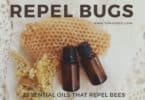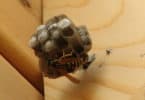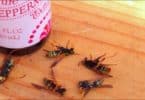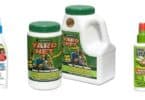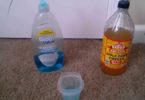What makes skunk spray smell so horrible? Chemical culprits called mercaptans or thiols, organic compounds whose sulfur-hydrogen bonds rather famously smell like rotten eggs. The human nose is so sensitive to mercaptans that it can detect the presence of a single molecule in 25 trillion molecules of air. Throw in the reek of burning rubber, a whiff of ammonia and oils that hold the foul-smelling molecules in place, and voila! Eau de Pepé Le Pew.
That chemistry lesson is important if your dog, your car, or your home has been deluged with this most noxious of all scents. The best-known home remedy for removing skunk spray is tomato juice. But tomato juice stains and anyway, it doesn’t really neutralize the stink. Instead what happens is a phenomenon called “olfactory fatigue:” your nose becomes desensitized to the skunk smell (an adaptation designed to prevent sensory overload of your nervous system) but remains receptive to the tomato juice odor. After an hour or so, your nose will regain its ability to sniff the skunk and you’ll be back to square one – minus a whole lot of Bloody Mary mix.
In order to remove the stench permanently you will need to change the molecular composition of the spray itself, breaking down the oils and neutralizing the odor. There are a number of commercial products that will accomplish this including Dow Chemical’s Nil Odor, Rexall’s “C-D Deodorant,” and Bramton Company’s Odor Away. But are these products you generally keep in your house? Maybe yes, but more likely no.
A second option that’s just as effective as commercial products is to whip up a batch of homemade Skunk Stink Be Gone from common ingredients you already have around your house. First you will need to prep the walls, floor or other affected area with a dilute solution of water and either vinegar (acetic acid) or chlorine bleach in order to break down the tacky oils in the spray.
Then combine 500 ml of 3% hydrogen peroxide with ½ cup of baking soda and a tablespoon of dishwashing detergent, and mix together in an open container. (Caution: The solution will bubble.) Apply the solution to the skunk-taminated areas with a clean sponge or rag. Let the solution stand for five minutes, and then rinse off with clean water. The skunk smell will be gone!
This recipe is effective but there are some precautions you need to keep in mind as you use it. First – the peroxide will begin breaking down into water and oxygen gas as soon as you’ve finished mixing the solution, so use the solution right away and do not try to keep it in a covered container – it will explode. Hydrogen peroxide stings; if you have any open cuts on your hands, most likely you will want to wear latex gloves for this operation. Hydrogen peroxide can be extremely harmful to the eyes so avoid splashing. Finally, hydrogen peroxide has a mild bleaching effect on many materials; if you are applying the solution to draperies or upholstery, their color may change.
<>


